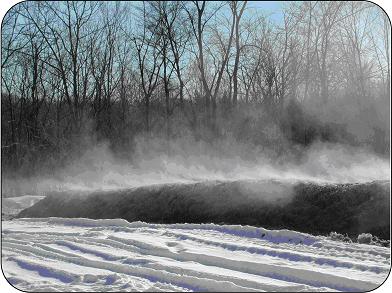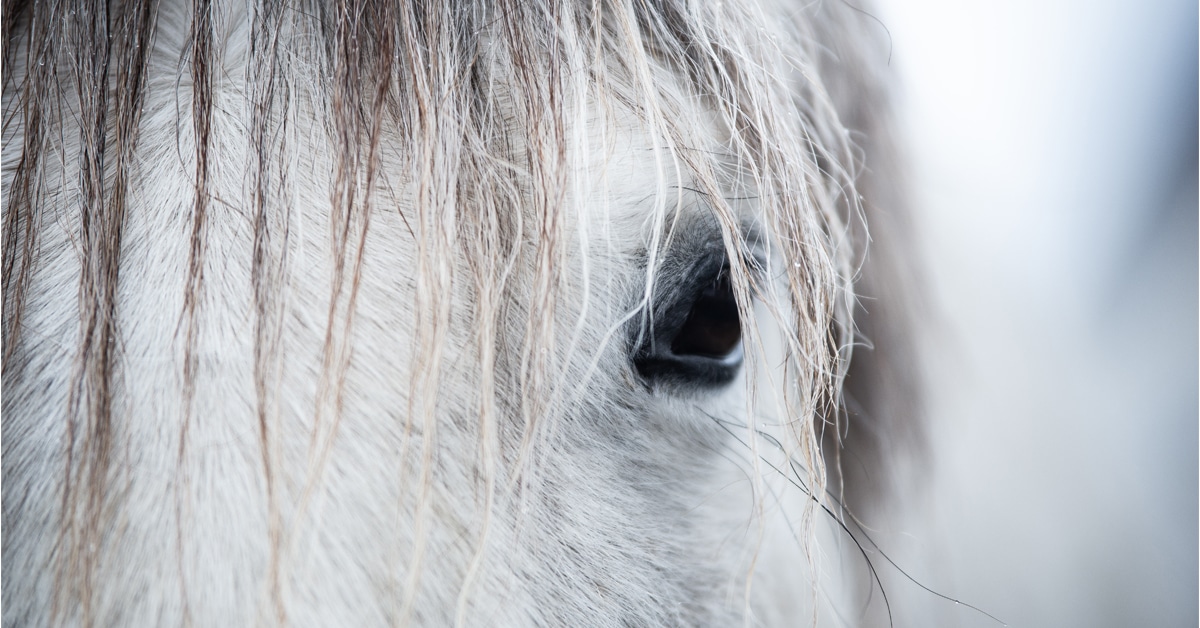It is the lowest point in a horse owner’s life: your beloved partner has had to be euthanized due to disease or old age, or has died unexpectedly or suffered a life-ending injury. Through the tears and trauma, one looming question remains: ‘What do we do with the body?’
Not every farm owner has enough property and the right large earth-moving equipment to be able to provide a suitable burial site for a horse, and composting, while still in its relative infancy, is also not always an option. The usual course of action involves calling a deadstock removal company to dispose of the body.
But what if no one is available? A series of events has led to a (hopefully) temporary shortage in Ontario recently in this specialty agricultural service. Between a shortage of drivers, a prominent business closing, spiralling gas and diesel prices and even government red tape, some collection companies have had to scale back both their operations and the scope of the areas they serve. Horse owners have shared horror stories during some recent webinars focussing on the issue ‒ tales of horses left under tarps for days in a sweltering arena, shockingly high rates from operators who have to travel enormous distances, and so on. There is even a Facebook group dedicated to the issue.
Reason for the shortfall
Atwood Resources Inc., based near Listowel in the southwestern part of the province, is one of the biggest deadstock disposal services in Ontario, but they have had to adjust their policy as of Sept. 1st and will not currently do pick-ups more than 90 minutes from their home base in Atwood. Due to some government red tape, they were forced to reduce their service area and have asked to be released from a federal funding program agreement two years early.
A spokesperson for Agriculture and Agri-Food Canada (AAFC) which provided the SWIP (Slaughter Waste Innovation Program) funding said, “Details of contribution agreements are business confidential, and are not made public. The Department communicates closely with Atwood Resources and will continue to be in discussion with the company until the agreement comes to an end.”
Another situation contributing to the shortfall occurred in Woodville in central Ontario, where deadstock removal company Ed Peconi & Son serviced a large area of the province for decades until the owner, Donnie Montague, died in February of 2020, leaving an enormous gap in the industry in terms of an unserviced area. Luckily, there is a new kid in town (see below) who is learning the ropes and can hopefully fill that void in a region with a dense equine population.
Incentive program
In light of the recent loss of on-farm deadstock pickup services in certain areas of the province, on November 18, 2021, the Ontario Ministry of Agriculture, Food and Rural Affairs (OMAFRA) launched targeted cost-share funding under the Canadian Agriculture Partnership (CAP) for deadstock management improvements. This CAP initiative is available to livestock producers, waste management facilities, municipalities and other agri-businesses such as livestock auction barns, assembly yards, deadstock transporters, collectors, renderers, and veterinary clinics. The initiative offers a 50% cost-share rate, up to a maximum of $25,000 per applicant, for projects aimed at in increasing capacity for deadstock management.

Windrow composting. (OMAFRA photo)
Completed application forms were accepted and, subject to OMAFRA’s discretion, approved on a first-come, first-served basis from November 18, 2021 until December 13, 2021. However, Belinda Sutton, spokesperson for the Ministry of Agriculture, Food and Rural Affairs, explains, “Applications for this funding are still being accepted. All applications are reviewed on a case-by-case basis to ensure eligibility. We encourage all applicants to contact Rural Programs Branch at AgRuralPrograms@ontario.ca if they have questions about this initiative.
“This funding builds on the regular cost-share funding offered under CAP through OSCIA’s producer intake, which was open from November 15, 2021 to December 6, 2021, and included biosecurity, animal welfare, education and training, and deadstock management improvement categories.
“Our ministry continues to build awareness with industry and producers about their on-farm deadstock disposal options, including burial or composting. We encourage the livestock industry to take the lead in identifying longer-term solutions for deadstock disposal.”
As the application and review process is still ongoing, OMAFRA is not currently at liberty to divulge which applicants have submitted successful projects.
Alternatives for horse owners
A couple of well-attended information webinars presented by OMAFRA and the Ontario Federation of Agriculture regarding On-Farm Options for Dead Animal Disposal have taken place recently. In the latest on Dec. 6th, practical ideas for deadstock handling for farm owners with a suitably large property were examined and included:
- Burial – advantages, selecting a site, soil considerations, pit measurements, water tables and tile beds, cold weather options;
- Composting – advantages, how composting works, best substrate materials, site regulations, biosecurity concerns.

Burial pits should not be dug too far in advance as they will fill with water and collapse. (OMAFRA photo)
Other options discussed suitable for smaller livestock such as incineration, in-vessel composting and using buried disposal vessels are not suitable or practical for equine operations. Of course, not every horse farm manager owns the property they are situated on, or the farm is located in an environmentally sensitive area due to groundwater, soil type, etc., where burial and composting may not be possible. In all cases, horse and farm owners were reminded the importance of planning, such as knowing who is available for hauling, timing and costs; or making sure, for example, that your neighbour is on-board with providing backhoe services even in the dead of winter.
Another option that is considerably more expensive but likely more ‘tasteful’ to most horse owners is cremation, where the body is transported to a facility and the resulting ashes can be returned to the owner if requested. Decorative urns can also be part of the package. Ontario Equine Cremation Services is the only such company operating in the province. Cremation does come a a fairly steep price, however, and can vary greatly depending on your location and the scope of services required.
Filling the niche
One person hoping to fill the deadstock removal void in the central part of the province is Mike McLaughlin, a recently-licensed operator running a new service out of Woodville, Ontario (905-960-7287) dealing with horses only. “That’s where the services seemed more in demand, so it felt right to focus on that area,” he said. “I’m trying to stick to York Region, Durham and Kawartha Lakes. I’ve had some calls [outside my area] where they can’t find anybody and I’ve committed to it.”
Mike purchased a farm in the area and while he is currently hauling to B & D Deadstock Service in Tweed and Atwood Resources, he ideally would like to set up a composting facility at home. “I think in the horse industry, for anybody that’s loved an animal for 30 years it’s a nice way to dispose of the animal” ‒ a sort of giving back to the earth.
He call the business “bittersweet” as a busy day for him means a terrible day for someone else. “It’s such a sensitive subject. It’s very hard for some people to talk about. Having pride in my work in such an awful situation, just being as gentle as I can for the animal and the customer, is the most important thing.”
And this job can be mentally draining, constantly dealing with distraught horse owners. “You have a new appreciation when you come home and you see your own animals. I’ve chatted with some vets over the last month about how to make this better, and what to watch for, because mentally, when you do what you do, you’ve got to be conscious of how you feel about it. You have to be strong for your clients, but you also have to make sure you take care of yourself.”
The learning curve has also been pretty steep. “There’s not much information out there, so I had to basically jump in and try to learn it right,” he says. “There’s no preparing for this. There’s no schooling, you have to just get out and do it. I’m trying to grow the business and take my time. As the people need me, they have started to find me. It’s going slowly, but I plan to be around for a long time.”
As winter closes in, many horse owners are left with the heartbreaking dilemma of aged horses that should not have to suffer through another winter being kept alive in some cases simply due to a lack of end-of-life options. Whether you plan an on-site burial, removal to another site, or even cremation, planning is key to making sure things go as smoothly as possible – even if the details are uncomfortable and painful to discuss.
(For an up-to-date list of licensed deadstock operators in Ontario, click here.)

